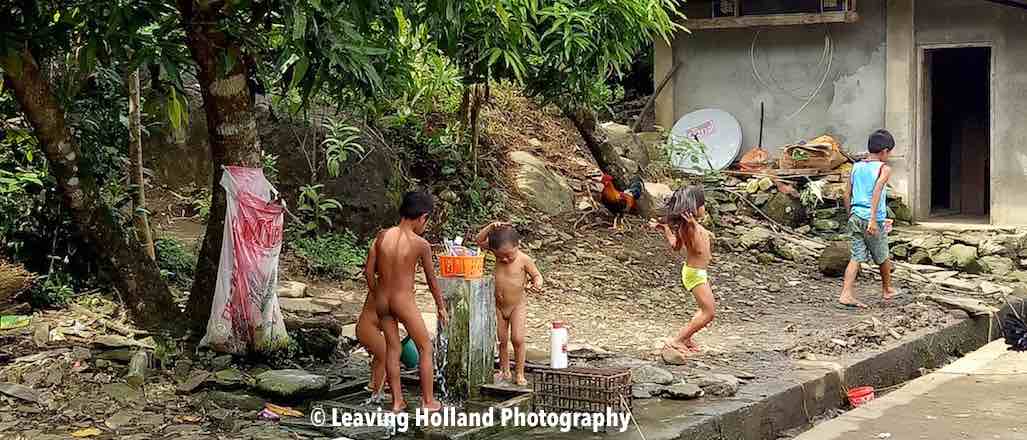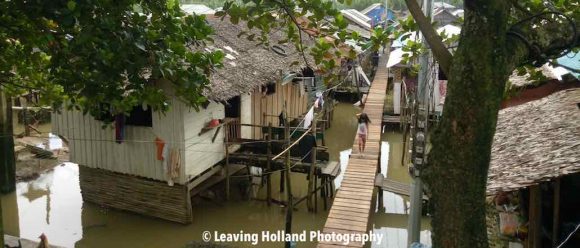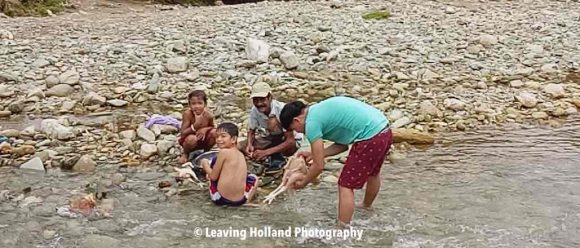
Drinking water and water supply in the Philippines
Never ever before have I been so aware of my water usage while living in the Cliff House in 2018 Siqujor Island in the Philippines. The house is located in an area where the water supply is vulnerable. The village I live in relies on water from an underground reservoir that is only to be filled with rainwater and water coming down from the mountain when and if there is rain. And there has been little rain.
Living in resorts and in cities or in tourist areas you will not notice much of the lack of water supply in the Philippines. It all seems to work just fine, rain showers are offered in hotels and swimming pools filled up, even here on Siquijor Island.
I quote from Wikipedia:
In 2015, 74% of the total population had access to “improved” sanitation, or 78% in urban areas and 71% in rural areas. In 2015, there were still 27 million without access to “improved” sanitation.
Outside the Manila area, the Philippines has a system of level 1 water supply: handpumps. People go there to wash and collect drinking water in black jerry cans and transport it to the house.
Some people live in an area where, with help of foreign financiers like the World Bank, the Asian Development Bank, and private stakeholders, there is an electric water pump and piped water to a communal water point, providing water for 4-6 households. Counting the size of an average Filipino household that would mean: 20-30 people. But probably more, since in the rural areas where these systems operate, families often have more than 3 children and parents are a part of the household as well.
Then there is the level 3 water supply, piped water provided to the house, on an average of 120 liters per person.
And here is why the maths goes wrong in my area. There is a communal water point next to the distribution point to the houses. And there are 6 houses connected to the water point. The communal outlet is the easiest way for water to get out, so, since water takes the easiest way out, the houses are without any water, and the community abundantly showers, washes and collects water for the jerry cans.
So nobody complains about it because there is plenty of water, at the barangay outlet. But not for the private houses, Filipinos, and foreigners. I, as a foreigner and a private house renter, am not allowed at the barangay outlet. So I heavily depend on my collected rainwater for showers and laundry.
With the end of summer just behind me and rain season not yet set in properly, I am reaching the end of my water supply
And so is the village well. There has been too little rain to fill up the well properly. And there is this thing going on of people hoarding water when the water district switches it on.
Huge barrels are filled whenever the water is available and some people fill way too many black jerry cans. All under the eye of each other, everyone is irritated by it but nobody speaks out for that is the culture. And they all copy each other. If he can do it, I can do it. And nobody understands the water system properly. Some people think I fill my blue water tanks with ‘street water’ as they call the pipeline, and I tell them it is rainwater. But beliefs are persistent here and die slow. Other people believe, that the more households connected the less water for the barangay outlet. They do not grasp that when I do not open a tap I use nothing.
In all my preparations for coming to the Philippines, I was never aware of the lack of drinking water and fresh clean water in the Philippines. I knew I had to drink purified water, but that’s about it. In Europe, we kind of believe that water problems only exist in Africa, or at least in my mind, it did.
Water-based diseases are still a life hazard in this country
Christmas 2 years ago the whole barangay of Tubod all children got very ill, because of the drinking water. They all ended up in the hospital with dysentery. The locals claim that someone up the mountain contaminated the water, most houses in rural areas have no bathroom, and the barangay CR you have to pay to use. So if you need to pee or poo, you easily go to the forest, for every pee in the barangay CR adds up and strains the low family income.
To my shame, I must admit I was not aware. To me as a tourist, seeing people wash at the roadside is a bit embarrassing but also picturesque, it gives me the feeling that I am in a totally different country, it enhances the pictures Google presents to us from a happy ever sunshine country where people live a little primitive. But I never grasped the whole story of those roadside baths and I never ever could imagine how normal they are in this country.
There is so little awareness in the Western world where, at the moment, we all focus on illegal immigrants and hunger and less on clean water
The handpump, level 1 water supply is pretty common in the Philippines. And with the growing gap between rich and poor in this country and the new tax system that raises prices even further and makes the poor suffer more, that gap will not be easily closed and water sanitation does not seem to be a high priority here. At least not to my knowledge. There is these occasional BUB project announced on billboards, and some universities like Silliman have some projects with electric pumps and solar power. But that is about it.
And the conflict between the need for agricultural land and domestic use is ongoing.
On the Island of Siquijor there seems to be no proper indication of where the underground reservoirs are, and every white person that buys land, drills a well, and starts charging the locals for water supply, all of a sudden it is ‘his’ well and ‘his’ water.
I feel a bit ashamed. I must say. It is my strong belief that freshwater should be available for all people, for me also. But because of the system, somehow the locals feel they have priority over us white folks, for we are rich and we use their water.
I’m struggling with the feeling of annoyance over the situation that the cliff house is running out of rainwater supply, and I have to put more strain on the villagers in while, I dread the moment I run out of stored water and I am jealous of their almost endless water flow.
But the awareness rising in me these last few days changed my whole attitude towards washing and rain season. My memories recall long hot showers in the Netherlands, where water was always available, opening a tap and drinking from it for it was always clean, and flushing the toilet after every usage for I never thought about it.
Here I fill a bucket and take a bucket shower (only 7 liters) or I soak myself, turn off the shower, soap myself and rinse myself. And the laundry…..I have no clue, I need to wash towels and bedsheets. But I do not have enough water.
O dear Lord, may it rain, just one night, lots……and then the next night also, lots, so I can fill up my tanks.

